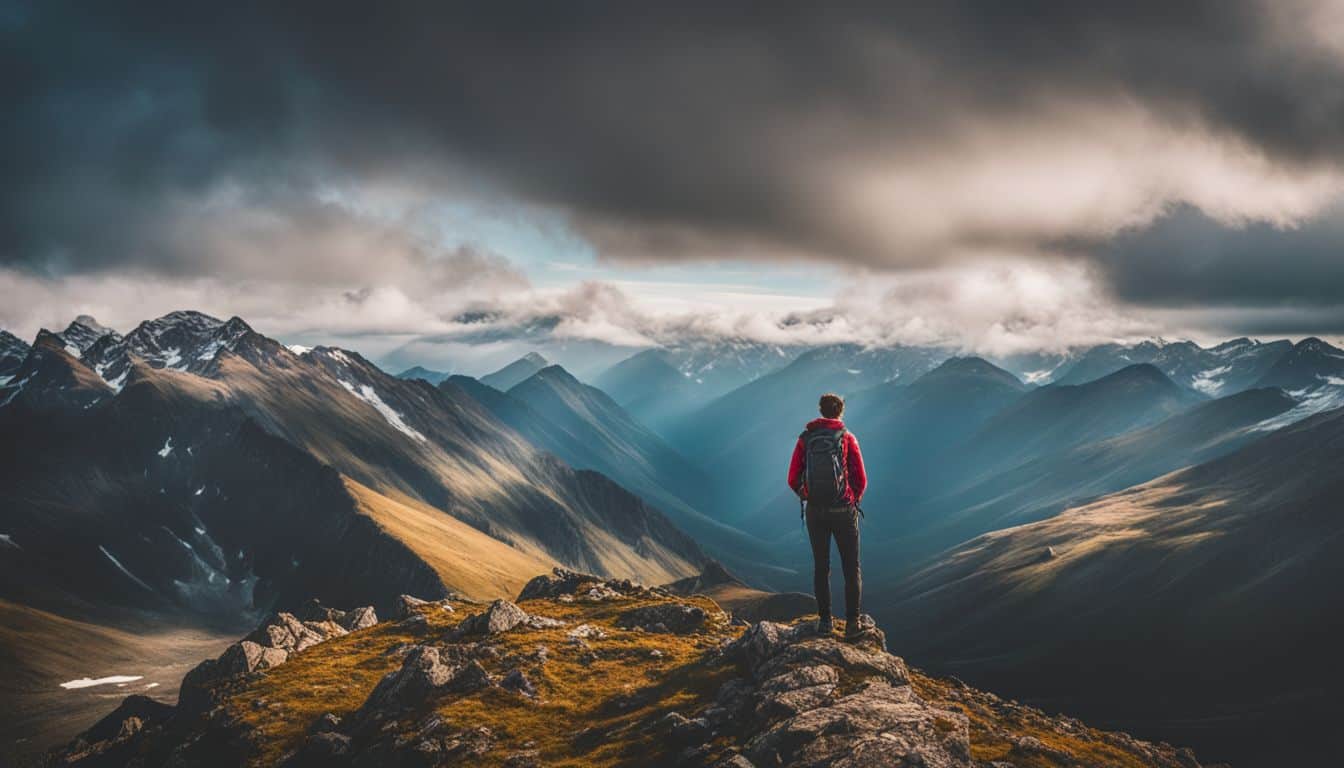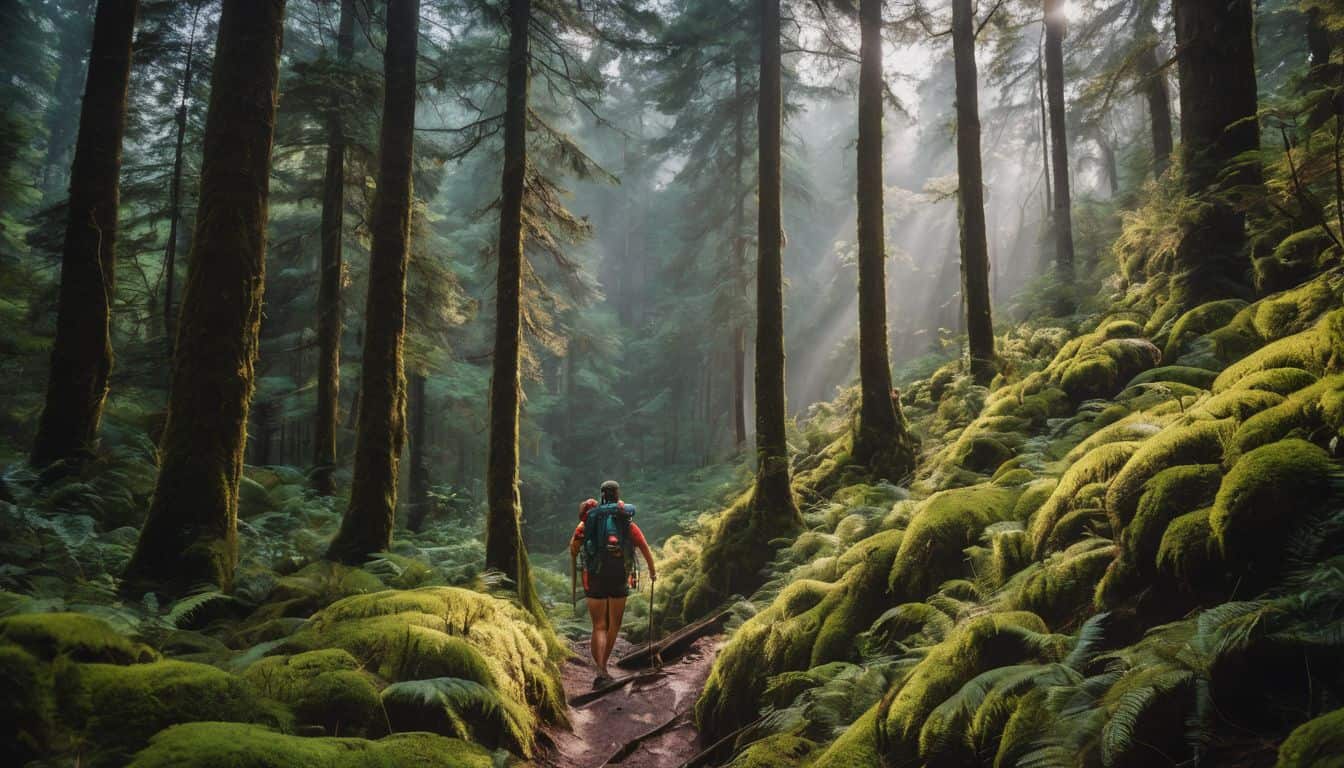Embarking on a solo backpacking adventure stirs excitement, but safety concerns can dampen the spirit. Did you know that adequate preparation can significantly mitigate risks on your solo journey? This guide is packed with essential tips and strategies to keep you safe while exploring the great outdoors alone.
The Appeal and Challenges of Solo Backpacking
Solo backpacking offers unparalleled freedom and opportunities for self-discovery. It allows you to travel at your own pace, make spontaneous decisions, and fully immerse yourself in nature.
This solitary experience can lead to profound personal growth and a deeper connection with the environment. You have the flexibility to change plans on a whim, linger at breathtaking viewpoints, or push yourself to new limits without having to consider a companion’s preferences or abilities.
However, it also comes with unique challenges, especially when backpacking remote trails. These challenges include complete self-reliance for navigation, decision-making, and problem-solving, potential feelings of loneliness or vulnerability, and increased responsibility for personal safety.

In remote areas, the consequences of mistakes can be more severe, and the lack of immediate assistance means you must be prepared to handle any situation that arises. The psychological aspect of being alone in the wilderness can also be challenging, requiring mental fortitude and self-confidence.
Essential Preparation for Solo Backpacking
Develop Crucial Skills
Before heading out alone, ensure you’re proficient in wilderness first aid, navigation, and basic survival skills. Consider taking courses or workshops to hone these skills. Wilderness first aid is particularly crucial as you’ll be your own first responder in case of injury or illness.
Navigation skills should include proficiency with both traditional methods (map and compass) and modern technology (GPS devices). Practice these skills in low-stakes environments before relying on them in remote areas.
Choose Your Destination Wisely
For your first solo trip, start with shorter, well-traveled trails and consider familiar locations you’ve visited before. Research the area thoroughly, including potential hazards and regulations.
Gradually increase the difficulty and remoteness of your trips as you gain experience and confidence. Consider factors like cell phone coverage, proximity to emergency services, and the likelihood of encountering other hikers when selecting your destination.
https://www.youtube.com/watch?v=bz-kF571_qE
Plan and Share Your Itinerary
Create a detailed trip plan and share it with a trusted friend or family member. Stick to your plan as much as possible to ensure others can find you if needed.
Your itinerary should include your planned route, expected campsites, and estimated return time. Include information about the gear you’re carrying and any medical conditions or allergies. Establish check-in times and procedures, and make sure your contact knows what to do if you don’t check in as scheduled.
Pack Smart
Bring essential gear including the Ten Essentials, a reliable communication device, and lightweight, high-quality gear to minimize pack weight. The Ten Essentials (navigation, sun protection, insulation, illumination, first-aid supplies, fire starter, repair kit, nutrition, hydration, and emergency shelter) form the core of your safety kit.
A satellite communicator or personal locator beacon can be a lifesaver in remote areas without cell coverage. Invest in lightweight, durable gear to keep your pack weight manageable, as you’ll be carrying everything yourself.
Safety Practices During Your Trip
Stay alert, trust your instincts, manage risks, practice proper food storage, and stay connected when possible. These practices are crucial, especially for those new to solo backpacking. For more general advice, check out these backpacking tips for beginners.
Maintaining situational awareness is key to solo backpacking safety. Always be mindful of your surroundings and trust your gut feelings if something seems off. Risk management involves making conservative decisions, like turning back if weather conditions worsen or avoiding challenging terrain if you’re feeling fatigued.
Proper food storage, using bear canisters or hanging methods, is essential to prevent wildlife encounters. When possible, use your communication device to check in with your emergency contact at predetermined times. Remember, it’s better to be overly cautious than to find yourself in a dangerous situation.
Special Considerations for Solo Female Backpackers
Female backpackers may face additional concerns. Connect with other female backpackers, choose campsites strategically, be cautious with personal information, carry personal safety devices, and project confidence.
Joining online communities or local groups for female backpackers can provide valuable support and advice. When selecting campsites, opt for established areas when possible and avoid camping too close to trailheads or roads. Be discerning about sharing personal information with strangers on the trail.
Carrying a whistle or personal alarm can provide an added sense of security. Most importantly, maintain a confident demeanor, even if you’re feeling uncertain. Confidence can be a powerful deterrent to potential threats.
Embracing the Solo Experience
Remember, solo backpacking is about more than just safety – it’s an opportunity for personal growth and empowerment. Embrace solitude, challenge yourself within reason, and celebrate your accomplishments.
Solo backpacking offers a unique chance for self-reflection and personal development. Use the solitude to connect with nature and your own thoughts. Set achievable goals for each trip and celebrate reaching them, no matter how small they may seem. This could be conquering a challenging trail, successfully navigating a difficult section, or simply enjoying a peaceful night under the stars. Each solo trip builds confidence and self-reliance, skills that extend far beyond the trail.
For those interested in how technology has changed the backpacking experience, explore our guide on modern backpacking. These advancements can enhance safety and comfort on solo trips, but remember that they should complement, not replace, fundamental outdoor skills and awareness.

Conclusion
Solo backpacking can be an incredibly rewarding experience when approached with the right preparation and mindset. By following these safety guidelines, developing essential skills, and trusting your instincts, you can minimize risks and maximize enjoyment on your solo adventures.
For those interested in how technology has changed the backpacking experience, explore our guide on modern backpacking. Remember, the goal is not just to stay safe, but to create unforgettable memories in the great outdoors. Happy trails!

Leave a Reply